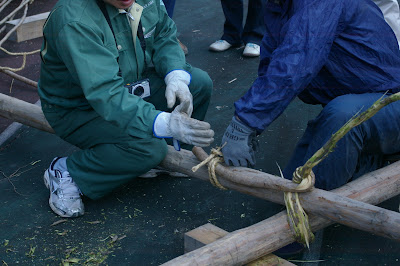Sano-san is the quinsential Hyakusho (百姓). He grows rice and vegetables for his family, and produces tea and raises Ayu fish for income. In his lifetime, this is the third time he’s thatched his home.
 Last spring I helped Sano-san with the thatching of the hira (平), the plane of the roof. This time work was done on the mune (棟), the ridge.
Last spring I helped Sano-san with the thatching of the hira (平), the plane of the roof. This time work was done on the mune (棟), the ridge.















































